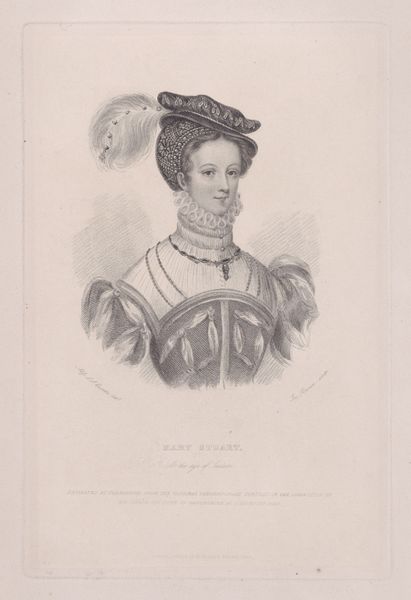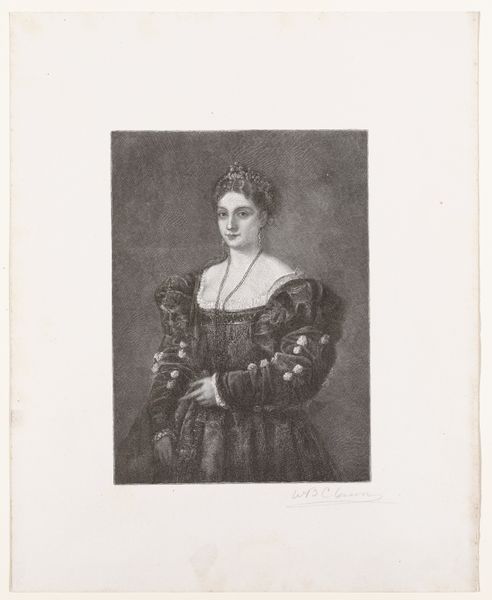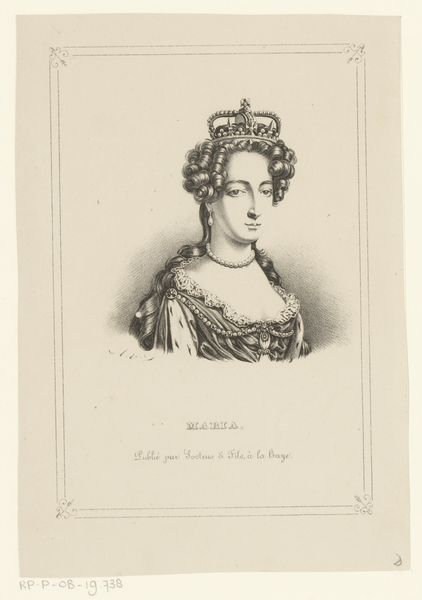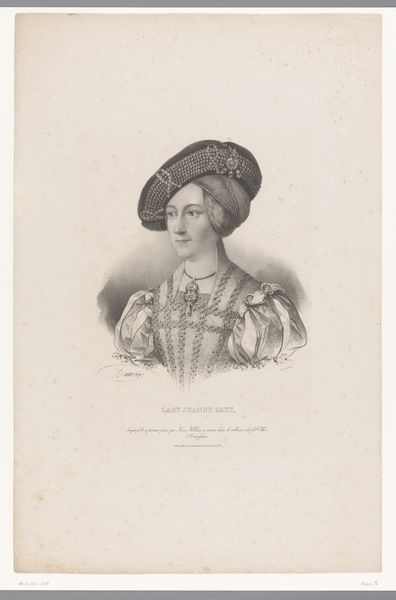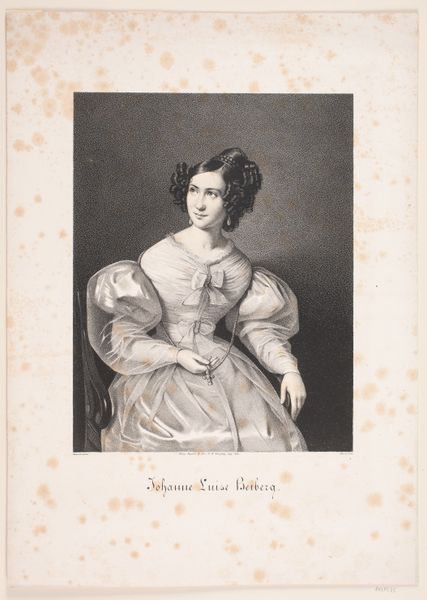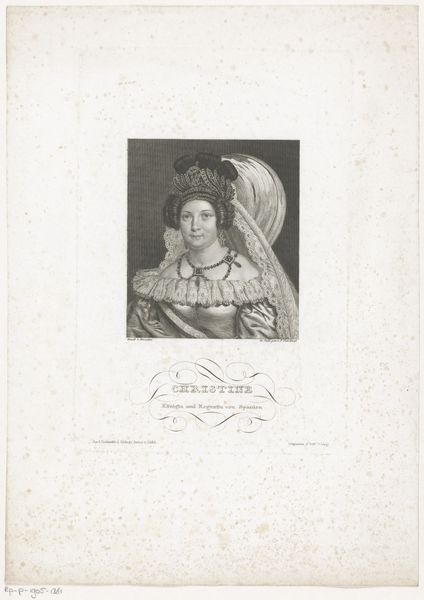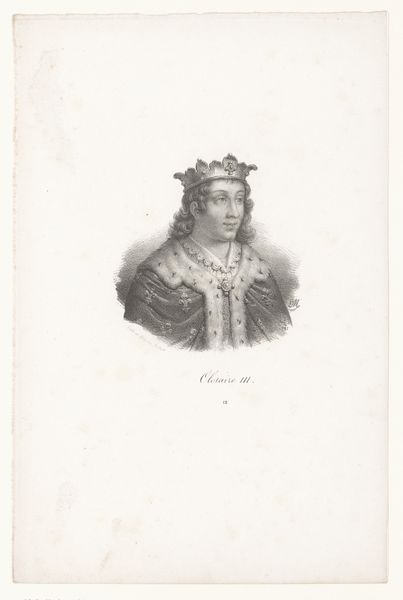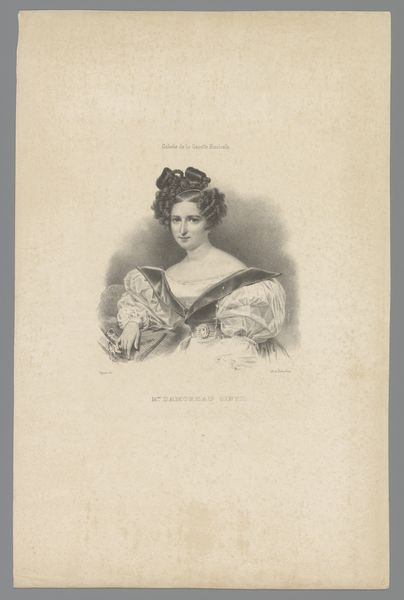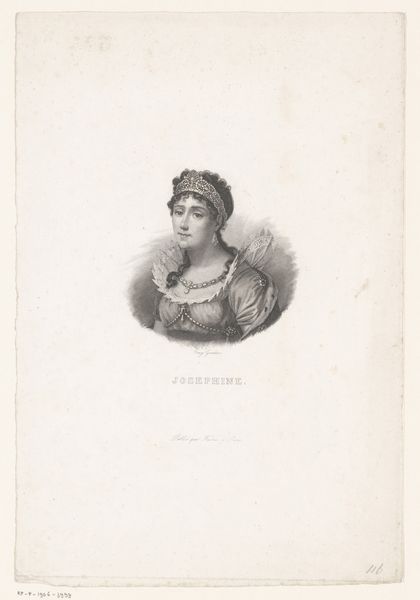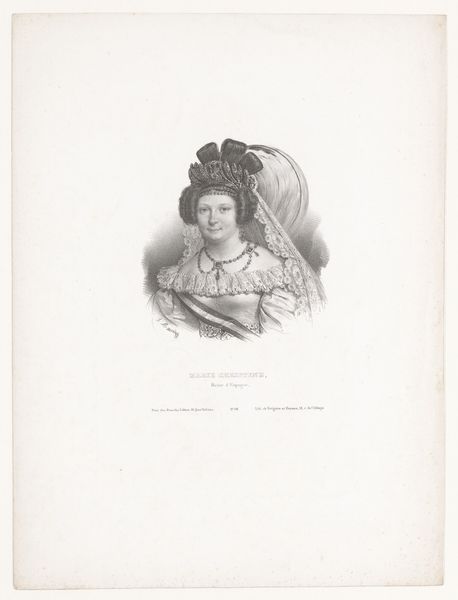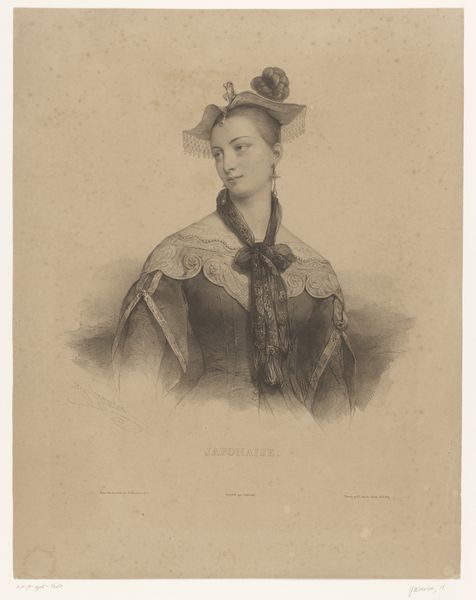
drawing, print, engraving
#
portrait
#
drawing
# print
#
old engraving style
#
figuration
#
romanticism
#
history-painting
#
engraving
Dimensions: Sheet: 11 9/16 × 8 1/4 in. (29.3 × 21 cm)
Copyright: Public Domain
Editor: Here we have Achille Devéria's "Mary, Queen of Scots," a print made sometime between 1800 and 1850. The intricate details created through engraving really capture the elaborate style of her royal attire. What are your initial thoughts? Curator: This engraving highlights the labor and material processes behind reproducing images in the 19th century. Think about the engraver meticulously carving the image into a metal plate – a skilled artisan mediating history for mass consumption. How does the choice of engraving, as opposed to, say, painting, affect our understanding of Mary's representation and its distribution? Editor: It’s interesting to consider how this artwork democratizes Mary's image, allowing wider access than a unique painting would. The printmaking process makes it more accessible. Do you think that shifts its function? Curator: Absolutely. It moves from singular artwork to commodity. Consider the materials: paper, ink, metal. Their relative inexpensiveness enables broader circulation. And look at the details of her clothing – rendered so meticulously through labor-intensive techniques. How do these details speak to the politics of dress and identity at the time of its making, but also to the commercial market for historical portraiture? Editor: So, it's not just about romanticizing history; it’s also about a product, and consumption. I hadn't considered how the material accessibility might be tied to market forces. Curator: Precisely! It highlights the convergence of artistic production, social context, and economic exchange. Thinking about who would buy this and why adds layers of interpretation. Editor: That gives me a new appreciation for the work. Looking at it as more than just an image but understanding its context of production really shifts how I see it. Curator: Indeed. It reminds us that art is not created in a vacuum; it is the product of materials, labor, and its historical moment.
Comments
No comments
Be the first to comment and join the conversation on the ultimate creative platform.
